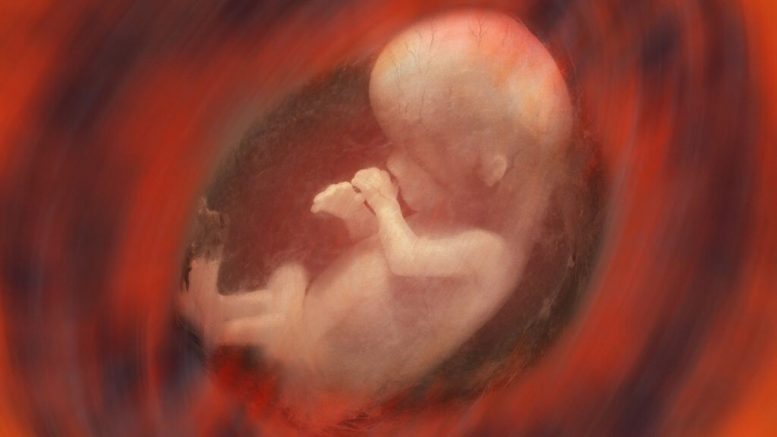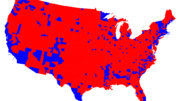With the Dobbs v. Jackson Women’s Health Organization case before the U.S. Supreme Court, our Nation faces the possible upending of the landmark decision Roe v. Wade — the case that has dictated America’s abortion laws for over 48 years. However, the justices in the majority made it clear that its temporary, provisional holding in Roe was never meant to be the final say on abortion.
As the Court later explained in Planned Parenthood v. Casey, the 1992 challenge to Roe, its decision was merely the Court’s best attempt to encourage “the contending sides of a national controversy to end their national division” based on the facts available in 1973.
Consider the sequence of events that led to the Court’s final decision in Roe.
The first draft of the Court’s opinion did not establish abortion rights; the second draft did but Justice Blackmun, Roe’s author, held that those rights only exist in the first trimester even though he recognized that standard as “arbitrary” and “equally arbitrary” to viability, which is when a fetus can first survive outside of his or her mother; but then, after Justice Powell suggested that viability would be more “generally accepted,” the final opinion crafted the Court’s viability standard in holding that women have a constitutional right to abortion up until fetal viability.
Further, consider the Roe Court’s discussion of outstanding questions and issues that needed to be resolved.
First, the Court claimed that it could not permit states to ban abortion at fertilization since justices could not determine “when life begins . . . at [that] point in the development of man’s knowledge”; this left open the possibility that if man’s knowledge developed to prove that a human’s life begins at fertilization (‘the fertilization view’), then the Court could be confident that abortion entails the taking of a human’s life and could hold that states have the Tenth Amendment right and Fourteenth Amendment duty to protect the preborn from abortion throughout pregnancy.
Second, the Court found that “the law ha[d] been reluctant to endorse any theory that life . . . begins before live birth or to accord legal rights to the unborn”; this left open the possibility that if states were to protect preborn humans in other legal contexts, then the Court could be confident that abortion bans are genuine protections of preborn humans instead of attempts to control women.
The Casey Court enshrined this logic in its standard for overturning precedents: “In constitutional adjudication as elsewhere in life, changed circumstances may impose new obligations, and the thoughtful part of the Nation could accept each decision to overrule a prior case as a response to the Court’s constitutional duty.”
READ: Legal scholars agree ‘viability’ doesn’t determine humanity of preborn children
Legal scholars have published on these “fact- and time-sensitive move[s]” by the Roe Court. For instance, one scholar argued that the Court “left open the possibility that if a sufficient consensus about the beginning of human life emerged” to prove the fertilization view, then Court’s viability standard “would have to shift with this consensus to protect human life in the womb” throughout pregnancy.
Thus, the Roe Court practically held that states could protect preborn humans from abortion if they prove that the preborn are humans and if they act consistently in providing the preborn equal legal protections in non-abortive contexts. And this makes sense: if the Court did not know whether abortion takes a human’s life and states did not charge a man with homicide after he attacked a pregnant woman and caused the death of her preborn child, then why should states have been allowed to charge and convict a physician for performing a medical abortion on a consenting pregnant woman?
Today, in Dobbs, not a single amicus brief filed in support of Roe disputed the science underlying the fertilization view. However, biologists from 15 countries filed an amicus brief in Dobbs, in support of neither party, that declared: “The fertilization view is widely recognized — in the literature and by biologists — as the leading biological view on when a human’s life begins.”
Today, the United States Congress and 29 states have passed fetal homicide laws that protect preborn humans from non-abortive violence starting at fertilization. In fact, states protect the preborn in at least eight legal contexts.
Finally, consider how the Roe Court ostensibly gave states a legal roadmap to overturn its precedent in Roe by declaring that fetal rights would outweigh the right to abort if the “suggestion of personhood is established” because the case for abortion rights “collapses, for the fetus’ right to life would then be guaranteed specifically by the [Fourteenth] Amendment.”
But what did the Court mean by “personhood”?
In the years following Roe, the Court revisited the issue in subsequent cases and Justices Blackmun, Brennan, and Marshall — who were all part of the majority in Roe — affirmed that “if there is not such a difference [between a fetus and a human], the permissibility of terminating the life of a fetus could scarcely be left to the will of the state legislatures” since fetal rights would be guaranteed by the Fourteenth Amendment. This is because the amendment uses the language “person” to refer to all living humans, as justices have explained that the amendment applies to all “weak and helpless human beings.”
Some might use “person” as a philosophical term that can be arbitrarily defined based on people’s preferences, but it is a straightforward legal term. Its meaning is only debated by those who seek to deny a human the rights they deserve — such as in discussions on abortion and end-of-life scenarios — or to recognize the rights of a non-human—such as in discussions on animal rights or corporate personhood.
The principle of equality necessitates that all humans, born and preborn, must be legally recognized as persons. As I outlined above, justices on both sides of the abortion issue agree that there can be no right to abortion if it entails the killing of a human since there can be no right to commit a homicide without an adequate legal justification. The core truth of the abortion debate is that — much like your right to throw a punch ends at the tip of my nose — abortion rights end when a human’s life begins.
The Court has waited 48 years for the evidence required to update its temporary, provisional holding with a decision reflective of that core truth. Since the Dobbs Court has a majority of dedicated constitutionalists, there is an overwhelming scientific consensus on when a human’s life begins, and states protect the preborn in several legal contexts — it is clear that day has finally come.
Steve Jacobs is the program director of Illinois Right to Life. He received his J.D. from the Northwestern University School of Law and his Ph.D. from the University of Chicago; his dissertation, “Balancing Abortion Rights and Fetal Rights: A Mixed Methods Mediation of the U.S. Abortion Debate”, focused on Americans’ common ground in the national abortion controversy.
“Like” Live Action News on Facebook for more pro-life news and commentary!
SOURCE: LIVE ACTION





